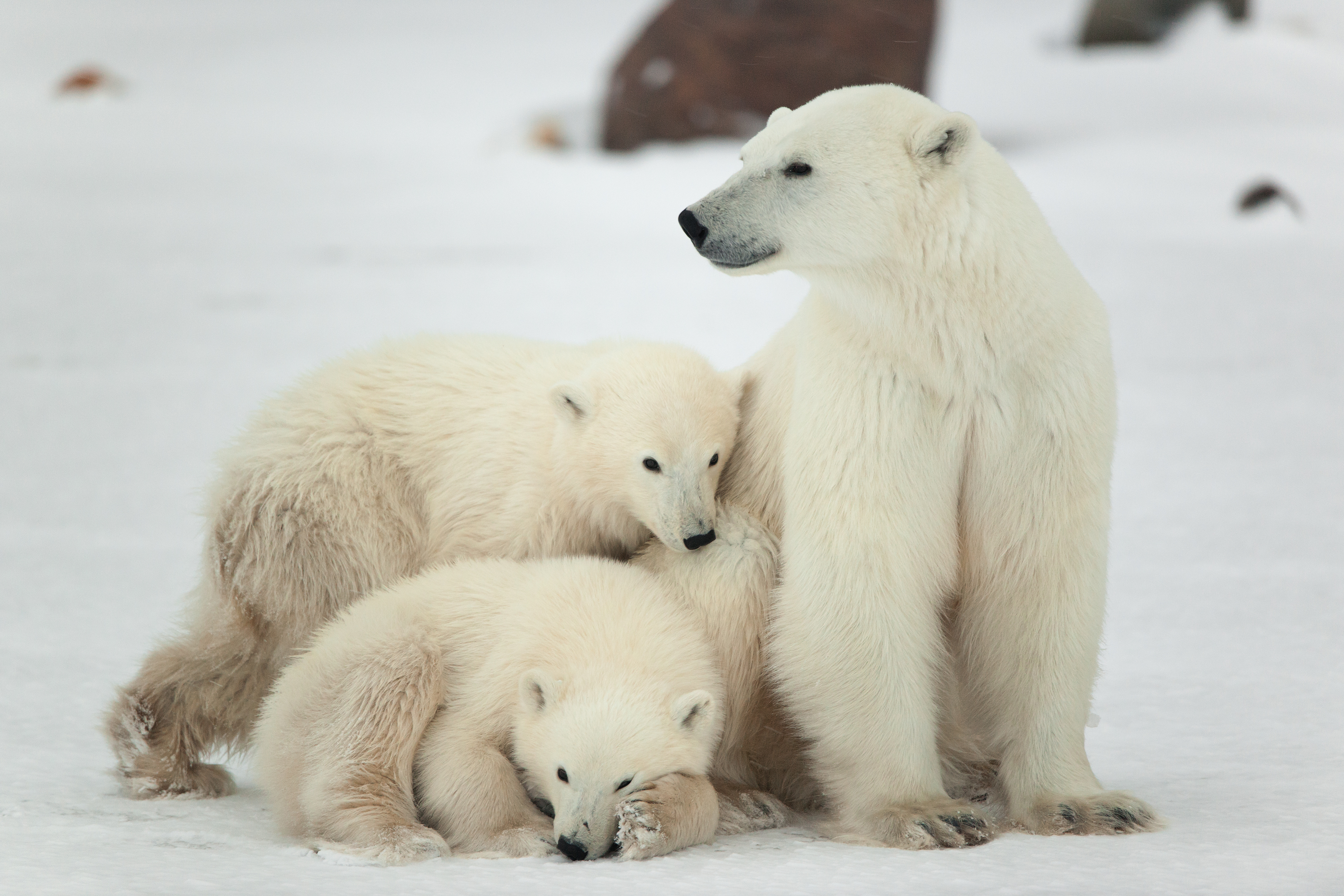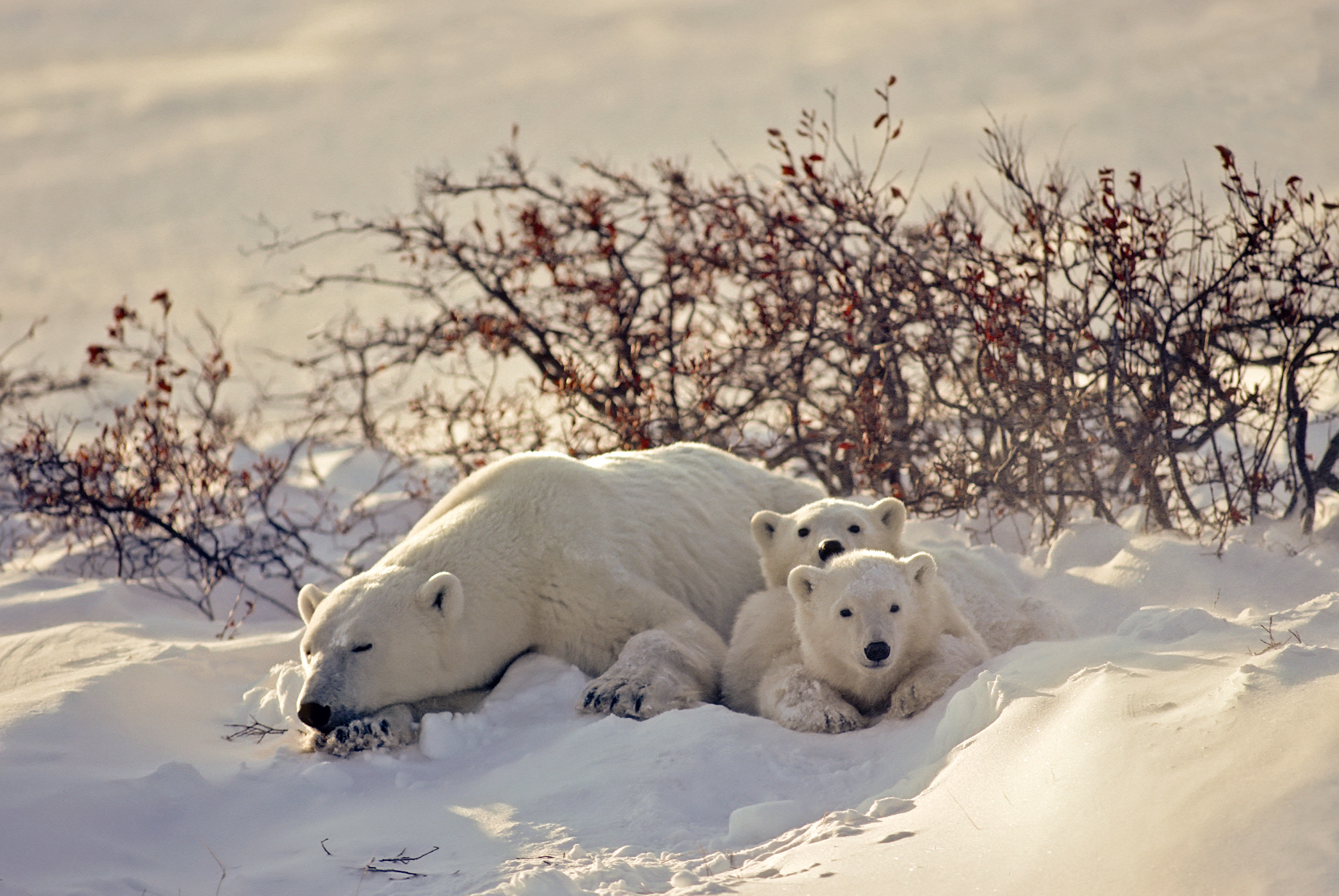Polar bear is a large, white bear of the North. Polar bears live in regions where the sea freezes in winter, chiefly along the northern coasts and islands of Alaska, Canada, Greenland, Norway, and Russia. They range throughout the Arctic Ocean as far north as the North Pole but remain more common near land. For food, polar bears primarily hunt seals. Loading the player...
Two polar bears
Body.
A polar bear has a long body and neck. Its head appears long and narrow with short, furry ears. Sharp teeth and curved claws help polar bears to catch their prey. From nose to tail, adult male polar bears measure from 7.5 to 8.5 feet (2.3 to 2.6 meters) long. Some weigh more than 1,300 pounds (590 kilograms). Most adult female polar bears are about 6.5 feet (2.0 meters) long and weigh 330 to 550 pounds (150 to 250 kilograms). Loading the player...
Polar bear
Polar bears have dense, yellowish-white fur that hides black skin. Their large size, fur, and the thick layers of fat beneath their skin protect polar bears from the bitter cold. Their fur also serves as camouflage for hunting.
Polar bears have good eyesight and a keen sense of smell. They can smell food from great distances and can sniff out seal dens covered by thick layers of snow and ice. Polar bears are excellent swimmers, although they paddle with only their front paws and cannot dive deeply. On a solid surface, they can run for short bursts at speeds up to 35 miles (56 kilometers) an hour.
Habits.
Polar bears feed mainly on seals—particularly a small species of seal called the ringed seal and a larger species called the bearded seal. In the spring, polar bears hunt young ringed seals by killing them at their dens. Later, seals are hunted at holes in the ice when they come up for air. After the ice breaks up, polar bears may surprise seals resting on floating ice by swimming up and pouncing on them. Polar bears will eat many other things, including berries and grasses, birds’ eggs, ducks, geese, lemmings, reindeer, seaweed, walrus, certain whales, and sometimes other polar bears. 
Most polar bears are active throughout the winter, but they can live in dens during times of harsh weather. A pregnant female bear will usually occupy a den from October to March or April. She most often digs the den in a deep snowbank on the side of a hill or valley. In late November or early December, she gives birth to one to three young—usually twin cubs. At birth, cubs are blind and weigh about 1 1/2 pounds (0.68 kilogram). The mother nurses her cubs until they weigh about 22 pounds (10 kilograms) and are strong enough to follow her while she hunts. Most cubs stay with their mother for about 2 1/2 years. Wild polar bears may live up to 33 years, and those in captivity may live a bit longer.

Polar bears and people.
Polar bears rarely kill people. People threaten the survival of polar bears through pollution and hunting. Global warming can also reduce the ice on which the bears live and hunt, threatening their survival. Laws protect polar bears in all nations where they live.
